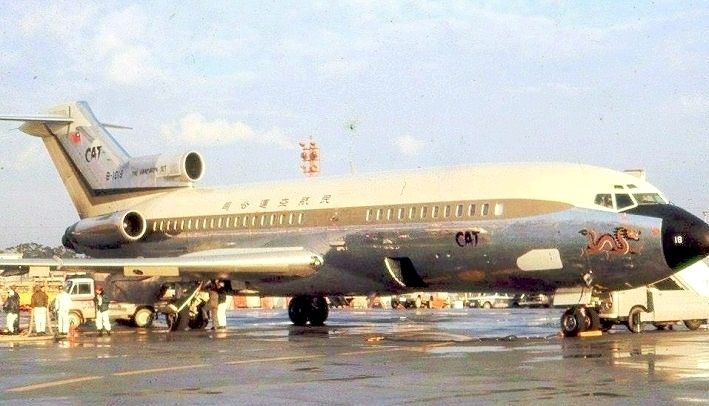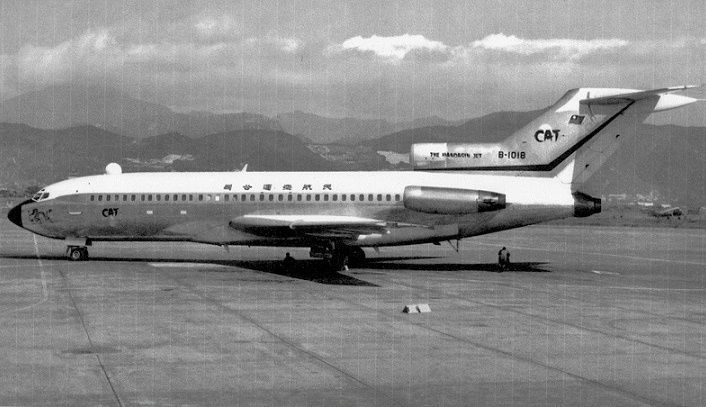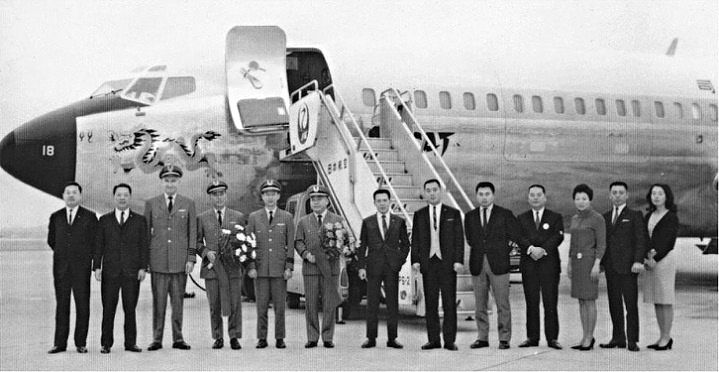|
|
Post by acourt on Feb 24, 2016 15:00:52 GMT
Gents, I didn't see these shadowy 727 covered, and couldn't find any requests either. Any takers? The very short-lived Civil Air Transport 727-92C B-1018, bought by CAT on January 3, 1968 and crashed northwest of Taipei just over one month later on February 16, 1968.    And Southern Air Transport/Air America/CIA/Who the Heck Knows 727-92C N5092 or N5093, both delivered in late 1966. N5093 became B-1018 above.   This article from airlinercafe discusses the 727 in some detail. link |
|
|
|
Post by aerofoto - HJG Admin on Feb 24, 2016 19:19:10 GMT
That CAT is probably one of the best, most worthy, of repaint suggestions I've seen here in a while .... from a historical perspective I mean .... BUT .... as always .... its' up to the painters  That CAT will probably be the aircraft which replacd their CV880-M .... as a number of operators eventually did with B727's toward the miod to late 1960's. Mark C AKL/NZ |
|
|
|
Post by crossbone40 on Feb 24, 2016 19:57:19 GMT
|
|
|
|
Post by acourt on Feb 24, 2016 20:42:54 GMT
|
|
|
|
Post by aerofoto - HJG Admin on Feb 24, 2016 21:28:28 GMT
I've not read this particular accident report yet (just too busy with non-FS related work at the moment), but, when the B727 (the -100's I'm talking about) first entered service (from around 1964/65 I think it was) any number of crews were still transitioning from props to jets .... and there were a spate of B727 landing accidents which occurred as the result of aircrews "getting behind the aircrafts/engine power curve" ..... to the extent that if the approach to landing airspeed was allowed to bleed off too much, then, it would result in a lethal sink rate which could not be arrested even by applying full power .... given the time (seconds .... but .... precious seconds also) that slower spooling jet engines need in order to respond to thrust changes in order to accelerate an airframe so as to achieve lift .... and with disasterous consequences for both the aircrasft and all those aboard  .... until crews were trained to fly more precisely "by the book" so to speak. Mark C AKL/NZ |
|
|
|
Post by Nathan Ford - HJG on Feb 25, 2016 9:25:56 GMT
|
|
|
|
Post by acourt on Feb 25, 2016 16:00:45 GMT
Thanks for the detailed photos, ftwd! The CIA sure knew how to outfit an airplane.  Mark, you're exactly right. Early jet "undershoot" accidents are why one of the stabilized approach criteria we use today is "engines spooled," and one of the reasons why modern FADEC engines usually include a higher "flight idle" (faster engine acceleration than from ground idle). For anyone who wants more information about the effects of "engine spool," research the crash of United Airlines Flight 227 at Salt Lake City. There's a link to the official accident report at the bottom of the Wikipedia page. And here's a link to a good write-up from the FAA. I found a digest from the early 1970s that included excerpts of the CAT 727 accident at Taipei (and, of course, I accidentally closed the tab and can't find it again). In this case, it seems like the crew was using Flaps 25 and never got slow. I'm beginning to think they just flew her into the ground. Of course this accident is shrouded in conspiracy, since CAT was a most unwelcome guest in that part of the world! |
|